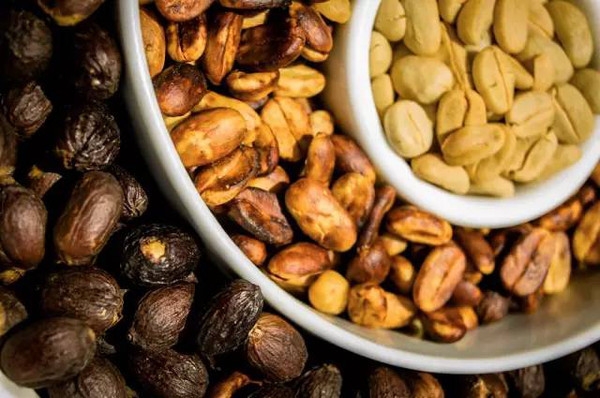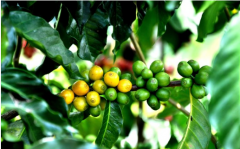A brief introduction to the History and Culture of the Origin and Development of Rosa Rosa in Tara Zhuotis Granite, Costa Rica

Introduction of Otis Gangyan Manor
Costa Rica Otis Gangyan treatment Plant is a burgeoning Costa Rican estate, the family cooperative was founded in 1994, but did not establish its own treatment plant until 2005, which has a history of 17 years. The Otis granite treatment plant is located at 5km, north of the town of San Marco in Tarrazu, with ten coffee estates, including Arnault, on a hillside of 1500m above sea level, all of which are the highest in SHB.
Treatment of Geisha / Rosa seed Golden Honey in Otis 2000 meters Manor
Flavor: dry fragrance is a delicate spring tea aroma with hints of orange peel and chocolate, scented tea, rose fruit, green grape, gradually showing with the change of temperature, the juicy sweetness of lemon and peach, and the finish of orange chocolate.
Factory name: coffee factory address: No. 10 Baoqian Street, Yuexiu District, Guangzhou City, contact: 020-38364473 shelf life: 90 net content: 100g packaging: raw and ripe coffee beans in bulk: whether coffee beans contain sugar: sugar-free origin: Costa Rica roasting degree: light roasting
Costa Rica Tarrazzu Honey Geisha
Country: Costa Rica
Grade: SHB
Producing area: Tarazhu
Baking degree: shallow baking
Treatment method: honey treatment
Variety: Rose summer
Treatment plant: Otis granite treatment plant
Flavor: scented tea, rose fruit, green grape flavor
Costa Rica's Meil treatment (also known as honey treatment) is unique. Lao Li also recently got the beans treated with Costa Rican red honey to supplement the unique method of Costa Rican Meil processing.
The treatment of honey:
After removing the peel and pulp, the coffee beans with pectin are dried. The key to distinguishing between different honey treatments lies in the remaining pectin: the proportion of retained pectin, drying time and drying method.
The characteristics of honey treatment:
When picking, we first test the sugar content and pick only the coffee fruits with a sugar content of 22%. Honey treatment is different from other processing methods and should be dried on an AFRICAN BED (tanning bed). If it dries directly on the cement or on the land, it is easy to scratch the coffee beans when turned, resulting in bacterial damage. Direct soil exposure can also give coffee beans an earthy taste.
The taste difference between honey treatment and washing treatment:
Higher sweetness, higher sugar content and higher alcohol thickness than washing (under the premise of the same baking degree)
Honey-treated beans need to be well ventilated when they are dry, otherwise the retained pectin mucosa is easy to ferment or mildew and cause bad smell.
We usually see the treatment of honey: yellow honey, red honey, black honey.
Important Notice :
前街咖啡 FrontStreet Coffee has moved to new addredd:
FrontStreet Coffee Address: 315,Donghua East Road,GuangZhou
Tel:020 38364473
- Prev

Guangzhou, 7 niche boutique cafes you must not know (7)
| Press Room Coffee | drink a cup of salty coffee in the printing shop with bright yellow and printing black, as well as large English inverted fonts on the wall, where media people have memories and feelings about newspapers. There are all kinds of old cameras and movable type printing machines on the wall, and even menu is the early appearance of newsprint. Although all the items in the store are baked by our own hands, I am the most
- Next

A brief introduction to the Market Price of Rosa Variety treated with Tara Zhuotis Gangyan Yellow Honey in Costa Rica
Variety: rose summer treatment plant: Otis granite treatment plant flavor: scented tea, rose fruit, green grape flavor Costa Rican Meil treatment (also known as: honey treatment) is unique. Lao Li also recently got the beans treated with Costa Rican red honey to supplement the unique method of Costa Rican Meil processing. Otis Gangyan Manor introduces Costa Rica.
Related
- Detailed explanation of Jadeite planting Land in Panamanian Jadeite Manor introduction to the grading system of Jadeite competitive bidding, Red bid, Green bid and Rose Summer
- Story of Coffee planting in Brenka region of Costa Rica Stonehenge Manor anaerobic heavy honey treatment of flavor mouth
- What's on the barrel of Blue Mountain Coffee beans?
- Can American coffee also pull flowers? How to use hot American style to pull out a good-looking pattern?
- Can you make a cold extract with coffee beans? What is the right proportion for cold-extracted coffee formula?
- Indonesian PWN Gold Mandrine Coffee Origin Features Flavor How to Chong? Mandolin coffee is American.
- A brief introduction to the flavor characteristics of Brazilian yellow bourbon coffee beans
- What is the effect of different water quality on the flavor of cold-extracted coffee? What kind of water is best for brewing coffee?
- Why do you think of Rose Summer whenever you mention Panamanian coffee?
- Introduction to the characteristics of authentic blue mountain coffee bean producing areas? What is the CIB Coffee Authority in Jamaica?

